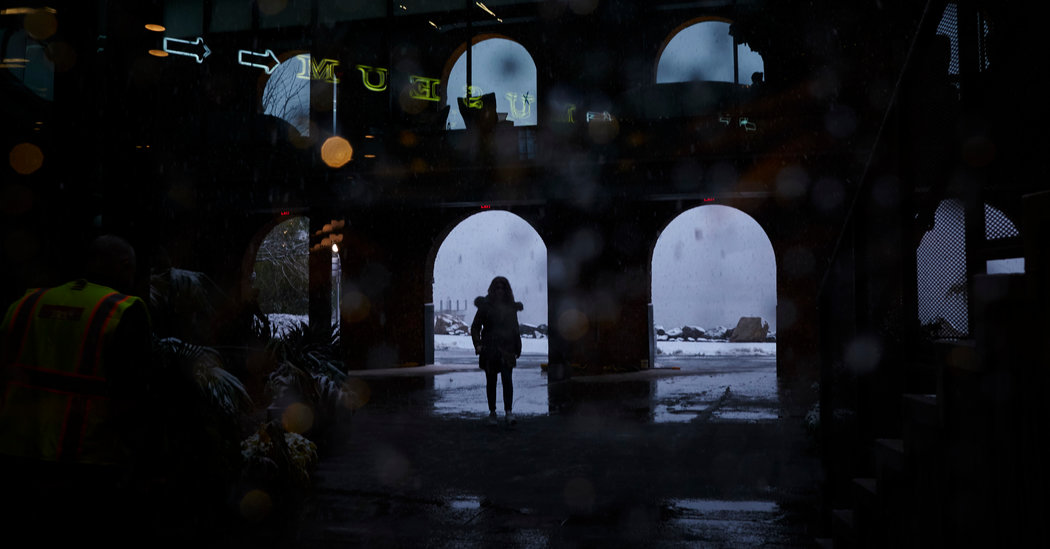By: Arthur C. Brooks – nytimes.com – November 23, 2018
America is suffering an epidemic of loneliness.
According to a recent large-scale survey from the health care provider Cigna, most Americans suffer from strong feelings of loneliness and a lack of significance in their relationships. Nearly half say they sometimes or always feel alone or “left out.” Thirteen percent of Americans say that zero people know them well. The survey, which charts social isolation using a common measure known as the U.C.L.A. Loneliness Scale, shows that loneliness is worse in each successive generation.
This problem is at the heart of the new book “Them: Why We Hate Each Other — and How to Heal,” by Senator Ben Sasse, Republican of Nebraska. Mr. Sasse argues that “loneliness is killing us,” citing, among other things, the skyrocketing rates of suicide and overdose deaths in America. This year, 45,000 Americans will take their lives, and more than 70,000 will die from drug overdoses.
Mr. Sasse’s assertion that loneliness is killing us takes on even darker significance in the wake of the mail-bomb campaign against critics of President Trump and the massacre at the Tree of Life synagogue in Pittsburgh, both of which were perpetrated by isolated — and apparently very lonely — men. Mr. Sasse’s book was published before these events, but he presciently described what he believes lonely people increasingly do to fill the hole of belonging in their lives: They turn to angry politics.
In the “siloed,” or isolated, worlds of cable television, ideological punditry, campus politics and social media, people find a sense of community in the polarized tribes forming on the left and the right in America. Essentially, people locate their sense of “us” through the contempt peddled about “them” on the other side of the political spectrum.
There is profit to be made here. The “outrage industrial complex” is what I call the industries that accumulate wealth and power by providing this simulacrum of community that people crave — but cannot seem to find in real life.
Why are we becoming so lonely? One reason is the changing nature of work. Work is one of the key sources of friendship and community. Think of your own relationships; surely many of your closest friendships — perhaps even your relationship with your spouse — started in the workplace. Yet the reality of the workplace is rapidly attenuating, as people hop from job to job, and from city to city, as steady work becomes harder to find and the “gig” economy grows.
Mr. Sasse worries even more, however, about a pervasive feeling of homelessness: Too many Americans don’t have a place they think of as home — a “thick” community in which people know and look out for one another and invest in relationships that are not transient. To adopt a phrase coined in Sports Illustrated, one might say we increasingly lack that “hometown gym on a Friday night feeling.”
Mr. Sasse finds this phrase irresistible and warmly relates it to his own life growing up in Fremont, Neb., a town of 26,000 residents. He describes the high school sports events on Friday nights that drew the townspeople together in a common love for their neighbors and community that made most differences — especially political differences — seem trivial. He relates with deep fondness the feelings he experienced, after moving away for a couple of decades for school and work, when he returned to Fremont’s small-town life with his family, and the deep sense of belonging it created.
In what might be called “the social capital of death,” Mr. Sasse charmingly describes the sense of being rooted that it gives him, at a robust and healthy 46, to own a burial plot for himself in Fremont’s local cemetery. A précis of Mr. Sasse’s recommendations to America thus might be this: Go where you get that hometown-gym-on-a-Friday-night feeling, put down roots and make plans to fertilize the soil.
That can be a tricky proposition for many of us. On reading the book, I asked myself where I might get that hometown-gym feeling, where I have natural roots, where I can imagine being buried. No specific place came to mind. I have no Fremont — not even Seattle, my hometown, which is a perfectly nice place, but one I unsentimentally left behind 35 years ago.
All this is particularly germane to my wife and me at the moment, as we prepare to move from Maryland to Massachusetts in the coming months. We fear the loneliness we are sure to feel as we enter a completely new place where neither of us grew up or has ever lived. Is a thick community and the happiness it brings out of reach for rootless cosmopolitans like us?
I recently put these questions to Mr. Sasse. He told me I had it all wrong — that moving back home and going to the gym on Friday aren’t actually the point; rather, the trick is “learning how to intentionally invest in the places where we actually live.” In other words, being a member of a community isn’t about whether I have a Fremont. It isn’t about how I feel about any place I have lived, nor about my fear of isolation in a new city. It is about the neighbor I choose to be in the community I wind up calling my home.
And there lies the challenge to each of us in a country suffering from loneliness and ripped apart by political opportunists seeking to capitalize on that isolation. Each of us can be happier, and America will start to heal, when we become the kind neighbors and generous friends we wish we had.
To see this article, click read more.
Source: Opinion | How Loneliness Is Tearing America Apart – The New York Times
 Listen Online
Listen Online Watch Online
Watch Online Find a Station in Your Area
Find a Station in Your Area







 Listen Now
Listen Now Watch Online
Watch Online
